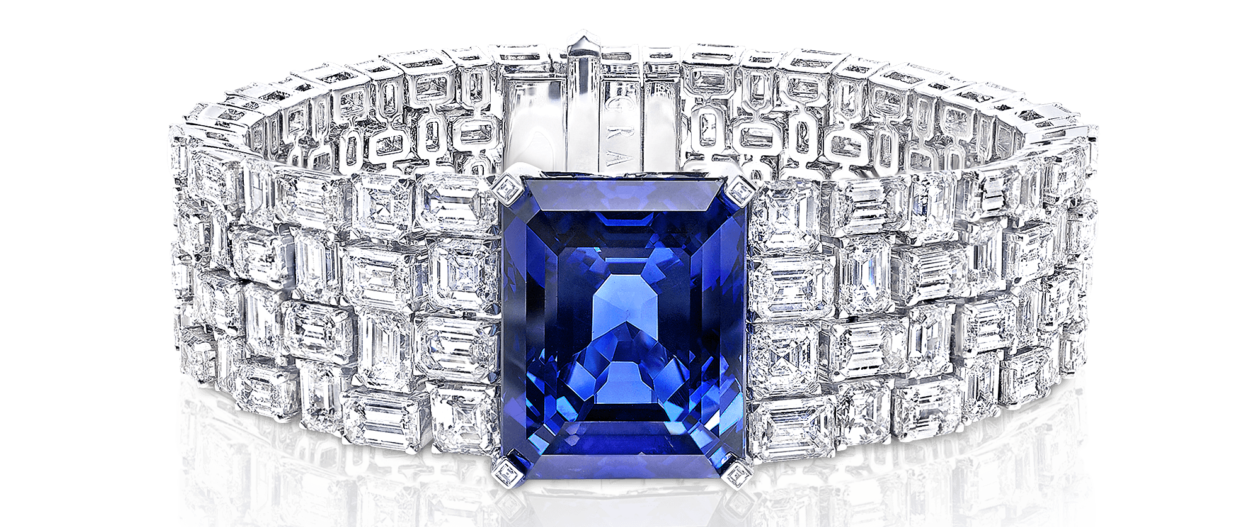


Art Deco Unheated 1.95ct Burma Blue Sapphireand Diamond Platinum Ring GIA Certified

A Simply stunning Art Deco ring c.1935 featuring a wonderful Unheated 1.95ct Burma Blue Sapphire from the famed gem mines of Mogok in Burma (Myanmar). The colour of this magnificent gemstone is an almost pure hue of blue, absolutely gorgeous! Bear in mind that the light in Chicago, as an example, may not be so bright this time of year! Clarity is extremely good for the gem genre and this is a bright and vibrant stone, as evidenced in the pics. The gem is not quite eye clean but overall clarity is *excellent* for the gem genre. Note however that we are using a macro lens and this is barely visible with the naked eye. Cutting is good and the stone has a decent face for its weight, without major windowing. The cut is slightly asymmetrical. Lustre and brilliancy are both wonderful, and this is an extremely vibrant gem indeed. The diamonds total 0.30ct and are clean and white. The metal is 10% iridium 90% platinum, indistinctly stamped in the shank, and diagnostic of the jewel’s age. The ring has numerous tiny scratches commensurate with its age and unpolished state. Size 6.75. The stone comes complete with a certificate from GIA as attached, evidencing colour blue, origin Myanmar, no treatment.

The base designed as an openwork scrolling bandeau, set with old-cut diamonds, applied with five sapphire and diamond graduated clusters, the detachable surmount of scalloped design, set with old-cut diamonds and with pear-shaped sapphire accents, adapted, inner circumference 22.0 cm
A 19th century sapphire and diamond tiara. Sold for SFr.40,000 on 15 November 2016
The exact origins of these jewels is extremely difficult to establish. They first appeared at auction at Christie’s London, on the 12th of July 1961. The catalogue then described: “An historic sapphire and diamond suite made for the empress Marie Louise and lastly owned by the duchess of Habsburg-Lothringen”. The suite at the time was composed of a rather ornate necklace, a bracelet, a small tiara and three brooches in the form of fleur-de-lis. The fleur-de-lis were mentioned as being originally part of the tiara. The very detailed and precise provenance described in the catalogue, which was not so common at the time, shows the factual information gathered at the time through the consignor and gives us the beginning of an explanation.
To know more about this provenance, one has to understand who were the Habsburg-Lothringen, a name that refers to the dynasty which ruled Austria, Hungary, Slovenia and Bohemia for centuries. This branch had been founded in 1736 by Empress Maria-Theresa (1717-1780), born a Habsburg, through her wedding with Francis, Duke of Lorraine (1708-1765) (Lothringen in german).
Empress Marie-Louise (1791-1847), second wife of Emperor Napoleon, was indeed born to the Habsburg-Lothringen family. After the collapse of the French Empire and the exile of her husband, she went back to her native land, Austria, and stayed in Vienna, in her father’s home, for two years before moving again to Italy. While in Vienna, she left the personal jewels she had taken with her in the Royal Palace, and some of them ended up being bequeathed to her Habsburg-Lothrigen relatives after her death in 1847.
The jewels as they exist today clearly do not date from Empress Marie-Louise’s era, which is the beginning of the 19th century. It is more likely that they were made after her death, using some of her sapphires and diamonds left in Vienna, maybe at the request of ‘Kaiser Franz Joseph’ or ‘his brother’, as mentioned in the 1961 catalogue. Considering the original suite sold in 1961, including a very interesting mix of two Lilies of France brooches and one Florentine Lily brooch, one can think they were created on the occasion of a wedding between a member of the Bourbon dynasty from France, Parma of Two-Sicilies (which emblem was the French fleur-de-lis), and a member of the Toscana branch of the Hasburg family (which emblem was the Florentine fleur-de-lis)
As there were quite a few of these wedlocks during the 19th century, it is unsure which one was at the origin of the present jewels, but it was obviously one that was also very close to the Imperial family of Austria. As a possibility, in 1861, Archduke Karl Salvator of Habsburg-Toscana married Princess Immaculata of Bourbon-Two Sicilies. Some of their descendants wear the title of Duke and Duchess of Habsburg-Lothringen, and might well have been the last noble owners of this Imperial suite.
Unheated 1.05ct Padparadscha Sapphire & Diamond Ring GIA Certified






Gorgeous Sapphire Jewelry























